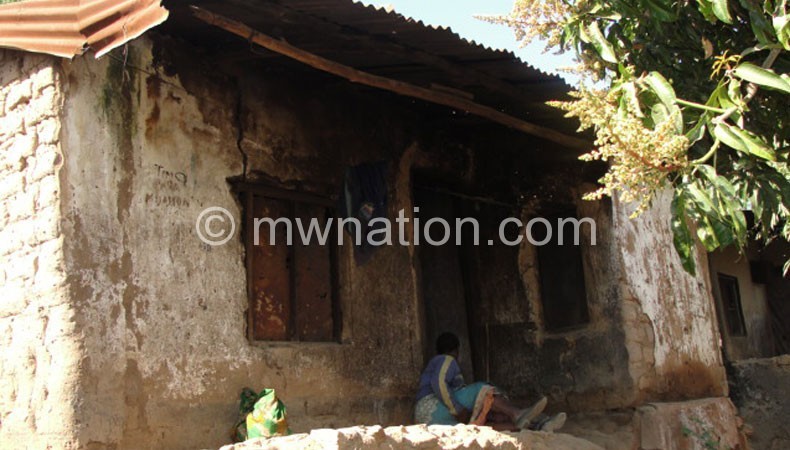Tracing the genesis of slums

Slums in cities, experts say, are not born. They argue with conviction that they are made by human decisions. But how?
Of course, semantics might explain the cosmetic differences between slum-like conditions in planned traditional housing areas and those in unplanned settlements, but history can best explain the origin of the two.
Mtafu Manda, a researcher in urban housing and lecturer in urban development at Mzuzu University, argues that slum-like housing in present-day urban Malawi can be traced to the policy of social exclusion by colonial rulers.
“During the colonial era, planned housing was only for white people. Black people’s locations were not considered as part of town; hence, there was no control for orderly development,” he says.
Unfortunately, the dawn of independence did little to bridge the gap. In fact, social boundaries were only shifted to incorporate all people.
“For example, in Blantyre, Ndirande became part of Blantyre. In Zomba, areas where whites lived such as Mangasanja and Old Naisi just below Zomba Mountain were amalgamated with slum areas such as Chikanda which, with its black majority, were, at first, not considered part of the city,” says Manda, who has published numerous articles on the status of urban housing in Malawi.
In other words, Manda’s argument is in line with what history scholars advance that Africa’s independence only removed white colonial rulers and replaced them with black colonial rulers.
However, 50 years down the line, the question remains: Why are these slum-like conditions still prevalent in the country’s cities?
According to experts, this is because of the high urbanisation rate in a country where investment in social housing has been low.
Malawi is a least urbanised country, with about 80 percent of its population living in rural areas. However, the movement of people from rural to urban areas is growing at an alarming rate. The urbanisation rate was estimated at 4.8 percent in 1998 and about 6.7 percent after 2000, making Malawi one of the most rapidly urbanising countries in the world.
“The rapid growth of the urban population,” says Manda, “is attributed not only to high rural–urban migration but also to the tendency to extend urban boundaries to bring peri-urban areas within the purview of ratable areas.”
Naturally, this wave of urbanisation has been accompanied by high demand for housing. Unfortunately, the demand for housing has always exceeded supply.
Executive director of Centre for Community Organisation for Development (Ccode), Siku Nkhoma, says with high rates of urbanisation, informal settlements have grown exponentially as they become areas of choice for the majority and the cities are not able to cope with this demand.
“Lack of investment in shelter provision for the people by the State has led to the growth of these informal settlements and the awful conditions have become an almost acceptable form of housing for the urban poor,” Nkhoma says.
However, apart from the question of rapid urbanisation, Malawi’s United Nations Human Settlements Programme (UN-Habitat) manager John Chome adds that the end of development of sites and services schemes (Traditional Housing Areas [THAs]) in cities in the 1980s has also worsened the slum problem.
“THAs provided serviced land at scale to majority of the urban poor to build housing in planned and serviced settlements. The fact that no such schemes have been developed at scale over the past 30 years has compounded the problem of slums,” he said.
Although slum settlements remain the only hope for thousands of people migrating from rural areas into the cities, they are a scar on the face of the country’s cities—an eyesore which town planners would gladly raze to the ground.
But is it possible to have a city without slums?
Experts are convinced that achieving a status of ‘City Without Slum by 2020’ as advocated by the UN Habitat is possible with political will.
“Countries like South Africa, Egypt and Tunisia have demonstrated this. They have shown that consistent political commitment over the years to large scale slum upgrading and service provision for the urban poor is key to reducing or stabilising slum growth rates,” says Chome.
He adds: “Countries performing well in managing slum growth have strategically targeted investments, legislation and pro-poor policy reforms in tackling slums. Such reforms have gone a long way towards enabling central government, local authorities and urban poor communities themselves to improve access to land, housing and basic services.”
Chome further explains that empowering cities (through decentralisation and promoting good urban governance) is also an important factor.
“But we must remember that local governance works, but in many countries it works best with strong support from the centre,” he says.n
—NEXT: As part of the solution to the slum problem, the World Bank once supported the Malawi government to help its people build low-cost but well-planned houses. The project failed to materialise. Is there hope for a solution to Malawi’s slum problem?





